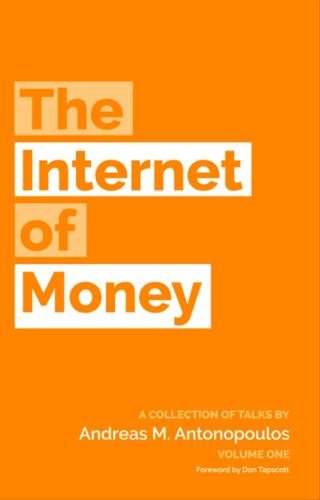
The Internet of Money
by
Andreas M. Antonopoulos
Published 28 Aug 2016
But that’s just the beginning. 9.5. Separating the Medium and the Message Once you realize that money has become a content type, that transactions have been disconnected from the medium, some really important secondary characteristics emerge. You see, the medium is the message, as someone famous once said. The primary reason the medium is the message is because the medium constrains, transforms, and in many cases, distorts the message. When your medium is TV, your message is 18 minutes long, interrupted by advertising slots. That is your message; there is no other format you can fit there. So, you make a message that fits that medium.

The People vs Tech: How the Internet Is Killing Democracy (And How We Save It)
by
Jamie Bartlett
Published 4 Apr 2018
The ‘system one’ system McLuhan had a theory that the written word, and by consequence the literate man, was calm, cool and rational. He ordered things and categorised them, which meant he had time to carefully analyse them. He was a reflection of the medium through which he received information. (This is where his other famous saying ‘the medium is the message’ comes from.) By contrast he thought electronic information, and especially television – his era’s internet – was aural. It was sound and pictures, a more complete sensory experience. If literate man was rational, said McLuhan, then electronic man would be more emotional, aural and tactile.
…
Richard Spencer – an influential alt-right leader – summed it up like this: ‘As long as whites continue to avoid and deny their own racial identity, at a time when almost every other racial and ethnic category is rediscovering and asserting its own, whites will have no chance to resist their dispossession.’19 * * * • • • If the medium is the message, is there a way to escape the drift toward ever more extreme ‘system one’ tribal politics? Of course. Laws, regulations or education can help. But, in the end, a cultural shift in how we understand political difference is the only real solution. When he became president in 1861, Abraham Lincoln appointed his opponents in the Republican primary race to prominent positions within his cabinet.

Collaborative Futures
by
Mike Linksvayer
,
Michael Mandiberg
and
Mushon Zer-Aviv
Published 24 Aug 2010
Take any books on any subject and custom-make your own book by simply xeroxing a chapter from this one, a chapter from that one—instant steal! As new technologies come into play, people become less and less convinced of the importance of self expression. Teamwork succeeds private effort.“ —Marshall McLuhan, The Medium is the MESSAGE This book was wri en in a collaborative Book Sprint by six core authors over a five-day period in January 2010. The six starting authors each come from different perspectives, as are the contributors who were adding to this living body of text. Six months later a new group of collaborators convened in New York City, while several of the first group also contributed simultaneously from NYC, Berlin and San Francisco.
…
And it is this thought, this form-of-life, that, abandoning naked life to ‘Man’ and to the ‘Citizen,’ who c lothe it temporarily and represent it with their ‘rights,’ must bec ome the guiding c onc ept and the unitary c enter of the c oming politic s.” —Giorgio Agamben, Mea ns without End: Notes on Politics. [University of Minnesota Press, Minneapolis, London: 2000] 25 What this book is… To begin looking at those futures, we look back to others who have looked into the future. Marshall McLuhan’s quote above, from “The Medium is the MESSAGE” give us our first clue about all of these assumptions we are making. We are talking about media, we are talking about freedom, we are talking about technologies, and we are talking about culture. McLuhan’s prophetic u erance, several decades before the photocopier fueled the punk cut-up design aesthetic, or the profusion of home-brew zines, is still unmet.

Utopia Is Creepy: And Other Provocations
by
Nicholas Carr
Published 5 Sep 2016
Quoth the Zuckster: “The next hundred years will be different for advertising, and it starts today.” Yes, today is the first day of the rest of advertising’s life. I like the way that Zuckerberg conflates “media” and “advertising.” It cuts through the noise. It simplifies. Get over your mainstream-media hang-ups, granddads. Editorial is advertorial. The medium is the message from our sponsor. Marketing is conversational, says Zuckerberg, and advertising is social. There is no intimacy that is not a branding opportunity, no friendship that can’t be monetized, no kiss that doesn’t carry an exchange of value. “Facebook’s ad system,” goes a company press release, “serves Social Ads that combine social actions from your friends—such as a purchase of a product or review of a restaurant—with an advertiser’s message.”
…
He would also be amazed to discover that the fuzzy, low-definition TV screens that he knew (and on which he based his famous distinction between hot and cool media) have been replaced by crystal-clear, high-definition monitors, which more often than not are crawling with the letters of the alphabet. Our senses are more dominated by the need to maintain a strong, narrow visual focus than ever before. Electric media are social media, but they are also media of isolation. If the medium is the message, then the message of electric media has turned out to be far different from what McLuhan supposed. That some of his ideas didn’t pan out wouldn’t have bothered him much. He was far more interested in playing with ideas than nailing them down. He intended his writings to be “probes” into the present and the future.
…
Walk into a dark room and hit the light switch, and the bulb generates a new environment even though the bulb transmits no information. The idea of a medium without content is hard to grasp. It doesn’t make sense in the context of our assumptions about media. But it’s fundamental to understanding McLuhan’s contention that the medium is the message—that every medium creates an environment independent of the content or information it transmits. So what are we to make of the smartphone, the medium of the moment, our portable environment? If, as McLuhan argued, the content of any new medium is an old medium, the content of the smartphone would seem to be all media: telephone, television, radio, cinema, printed book, electronic book, comic book, record, MP3, newspaper, magazine, letter, newsletter, email, peep show, library, school, lecture, ATM, desktop, laptop, love note, medical record, rap sheet.

Amusing Ourselves to Death: Public Discourse in the Age of Show Business
by
Neil Postman
and
Jeff Riggenbach Ph.
Published 1 Apr 2013
This change-over has dramatically and irreversibly shifted the content and meaning of public discourse, since two media so vastly different cannot accommodate the same ideas. As the influence of print wanes, the content of politics, religion, education, and anything else that comprises public business must change and be recast in terms that are most suitable to television. If all of this sounds suspiciously like Marshall McLuhan’s aphorism, the medium is the message, I will not disavow the association (although it is fashionable to do so among respectable scholars who, were it not for McLuhan, would today be mute). I met McLuhan thirty years ago when I was a graduate student and he an unknown English professor. I believed then, as I believe now, that he spoke in the tradition of Orwell and Huxley—that is, as a prophesier, and I have remained steadfast to his teaching that the clearest way to see through a culture is to attend to its tools for conversation.
…
For although culture is a creation of speech, it is recreated anew by every medium of communication—from painting to hieroglyphs to the alphabet to television. Each medium, like language itself, makes possible a unique mode of discourse by providing a new orientation for thought, for expression, for sensibility. Which, of course, is what McLuhan meant in saying the medium is the message. His aphorism, however, is in need of amendment because, as it stands, it may lead one to confuse a message with a metaphor. A message denotes a specific, concrete statement about the world. But the forms of our media, including the symbols through which they permit conversation, do not make such statements.
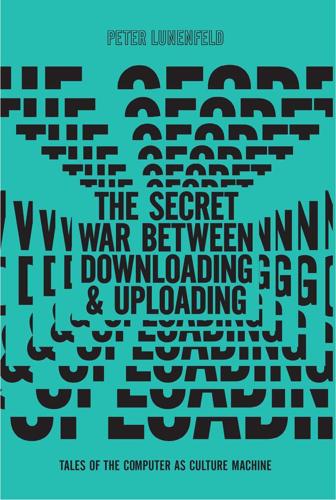
The Secret War Between Downloading and Uploading: Tales of the Computer as Culture Machine
by
Peter Lunenfeld
Published 31 Mar 2011
It does not matter if it is delivered over the air, via cable, or with the aid of a dish; played back from tape, digital video disc (DVD), or a digital video recorder’s (DVR) hard drive; watched on a plasma screen, an ancient console, or in the car (a particularly terrifying development for those of us who drive the freeways). Television is always the same: to watch it is to track an electronic download in real time—a narrativized progress bar with a laugh track.3 Marshall McLuhan was half right: the medium is the message, but the messages also define the medium. And what of the computer? The challenge it has mounted to television over the past decade has little to do with one machine being replaced by another—in the manner of 78s being supplanted by LPs, vinyl records by 8-tracks and cassette tapes, and compact discs (CDs) by MP3s; or videotape recorders by laser discs to be followed in turn by DVDs, video on demand, and DVRs.
…
Often invoking “quality shows” like The Sopranos and The Wire, the capitulationists wax on about narrative complexity, visual sophistication, time shifting via DVRs, the release of whole seasons on DVD, and the increasingly intertwined hypercontextualization of television via extratextual material on the Web, including podcasting and mobisodes on mobile phones, all to make the claim that television has finally reached a critical mass of cultural importance. Yet if the formulation that the medium is the message holds true, the unfortunate fact is that the medium has not turned out to be all that good for us in heavy usage, even if some of the programming is as good as contemporary film.8 7 CHAPTER 1 Television’s junk culture spews the high fructose corn syrup of the imagination, and as a result of our addiction to the box, we have contracted cultural diabetes.
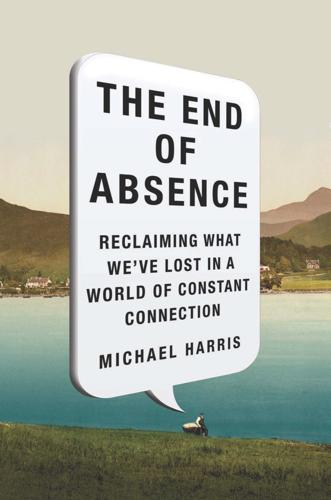
The End of Absence: Reclaiming What We've Lost in a World of Constant Connection
by
Michael Harris
Published 6 Aug 2014
We were encouraged by the technologies of writing and printing to take on some kinds of input and discouraged from taking on others. Today we privilege the information we take in through our eyes while reading and pay less heed to information that arrives via our other senses. In plainest terms, McLuhan delivers his famous line: “The medium is the message.” What you use to interact with the world changes the way you see the world. Every lens is a tinted lens. • • • • • A latter-day King Thamus or Squarciafico would grumble at me for using my phone to call up my partner’s number. In fact, I’ve never known Kenny’s number by heart. But it’s not something I worry about or seek to fix.
…
One day soon we’ll contentedly discuss dreams that appeared to us as bright blue bubbles of text. My day’s activities included: a visit to the bank to pay a bill; sending a printed chapter of my book to Matthew in Ottawa; Mailbox (11:45!); 40 minutes ogling Shaughnessy mansions; 30 minutes reading Coupland’s riff on McLuhan’s The Medium Is the Message. But nothing feels productive (i.e., nothing makes me money). Increasingly disturbed by how hamstrung my work-life is without Internet. I can’t take on new projects, or even invoice for old ones. I sweep and tidy my desktop instead. My free time is capacious. Found myself disappointed when I checked my toenails and saw it wasn’t time to clip them yet.
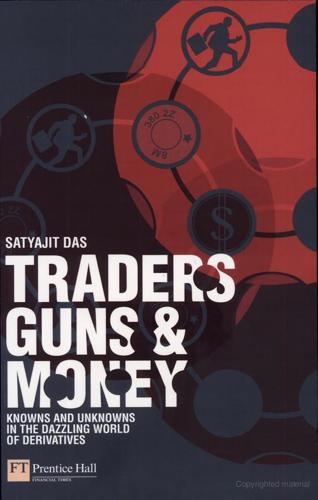
Traders, Guns & Money: Knowns and Unknowns in the Dazzling World of Derivatives
by
Satyajit Das
Published 15 Nov 2006
DAS_A01.QXD 5/3/07 8:01 PM Page viii Contents List of figures and tables xii Preface xiii Prologue 1 Miracles and mirages Serial crimes Beginning of the end/end of the beginning Knowns and unknowns Unreliable recollections Summary judgment 2 5 9 12 13 17 1 Financial WMDs – derivatives demagoguery 19 School days It’s all Chinese to me A derivative idea Betting shops Secret subtexts Leveraged speculations Under the radar Whole lotta swapping going on The golden age/LIBOR minus 50 Warehouses Serial killings Forbidden fruit Derived logic 2 Beautiful lies – the ‘sell’ side Smile and dial Market colour Rough trade Analyze this 21 22 23 25 27 29 32 33 37 40 43 45 50 53 55 56 59 62 DAS_A01.QXD 5/3/07 ix 8:01 PM Page ix Tr a d e r s , G u n s & M o n e y Class wars Ultra vires Feudal kingdoms Uncivil wars Golden rules Business models The medium is the message Bondage Tabloid cultures Conspicuous currency Ethnic cleansing Foreign affairs FILTH Lost in translation A day in the life 3 True lies – the ‘buy’ side Turn of the fork Risky business Magic kingdoms Stripping or stacking/hedging perils, again Me too ‘Zaiteku’ or the bride stripped bare The gamble in P & G Tobashi, baby Gnomes of Zermatt and Belgian dentists Death swaps Investment fashions Alpha, beta, zeta Looking after the relatives Agents all Unique selling propositions 4 Show me the money – greed lost and regained Money uncertainty Toll booths Take a seat Efficient markets On the platform A day at the races Black swans, black sheep Trading places 64 66 67 68 70 71 74 75 76 77 79 80 81 82 83 87 88 89 91 95 97 98 101 105 107 108 110 112 115 116 117 121 122 123 125 126 127 129 130 131 DAS_A01.QXD 5/3/07 8:01 PM Page x Contents Secret intelligence Overwhelming force Oracle of Delphi Free money The colour of money In reserve A comedy of errors Black holes What’s the number?
…
Survival requires keeping your head down. There was no point in resisting the latest fad, I just nodded and kept doing what I always did – trying to make money. No management fad lasted long. Before you knew it, we would have a new ‘business model’ and would be entering a ‘new paradigm’. The medium is the message Complex business decisions require numerous management retreats. Management rarely advances; they are usually in retreat. Conferences, strategy sessions and other talkfests take up management time. Managers are constantly huddled together with the consultant du jour discussing business models and strategies.
…
‘I think I probably said that to The Washington Post although I don’t recall precisely what I said. But I’m pretty sure it’s roughly what I say all the time.’ 6 In the 1960s a Canadian academic, Marshall McLuhan, built a reputation on his views of modern culture. He is best remembered for the pithy phrase ‘the medium is the message’. Nobody quite knew what McLuhan was getting at. In press coverage of finance and markets, the medium is the only message. McLuhan also understood the value of the secret information that everybody in financial markets covets: ‘This information is top security. When you have read it destroy yourself.’

How to Stand Up to a Dictator
by
Maria Ressa
Published 19 Oct 2022
In the West, those revolutions had triggered a debate about whether Facebook and Twitter had spawned them.7 But regardless of where the academics came down on the question, clearly the internet, and social media specifically, had been a critical factor in igniting long-standing grievances, breaking down people’s fears, enhancing their courage, and fast-tracking protests that might otherwise have taken months and years to organize. The result had been the downfall of dictatorships. The medium that carries the message shapes and defines the message itself, I told the students, invoking the media theorist Marshall McLuhan’s seminal work, “The Medium Is the Message.”8 Social media’s instantaneous nature had accelerated the speed at which the revolutions had taken place. Authoritarian governments couldn’t keep up or control the messaging because those protest movements were modeled on the networks of the web: loose, nonhierarchical, leaderless. Dictators didn’t know whom to arrest; there were no political parties to tear apart, no underground revolt to dismantle.
…
See, e.g., William Saletan, “Springtime for Twitter: Is the Internet Driving the Revolutions of the Arab Spring?,” Slate, July 18, 2011, http://www.slate.com/articles/technology/future_tense/2011/07/springtime_for_twitter.html; and D. Hill, “Op-Ed: The Arab Spring Is Not the Facebook Revolution,” Ottawa Citizen, November 16, 2011. 8.Marshall McLuhan, “The Medium Is the Message,” 1964, https://web.mit.edu/allanmc/www/mcluhan.mediummessage.pdf. 9.Suw Charman Anderson, “The Role of Dopamine in Social Media,” ComputerWeekly.Com, November 26, 2009. 10.Jack Fuller, What Is Happening to News: The Information Explosion and the Crisis in Journalism (London: University of Chicago Press, 2010), 46. 11.Suzanne Choney, “Facebook Use Can Lower Grades by 20%, Study Says,” NBC News, September 7, 2010, https://www.nbcnews.com/id/wbna39038581. 12.This rolled out in the United States to select users in August 2015.
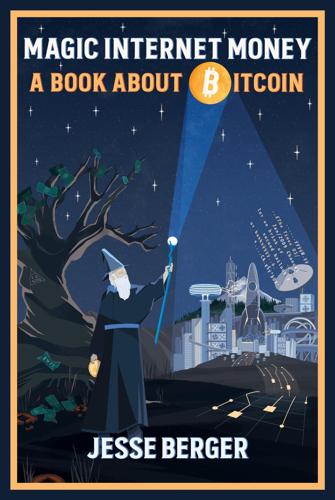
Magic Internet Money: A Book About Bitcoin
by
Jesse Berger
Published 14 Sep 2020
The dubious track record of some of its shamefully departed intermediaries should motivate all users to make every effort to understand the cumbersome nature of private keys. Like anything worthwhile, locking down your personal Bitcoin bank requires some resolve, but this low hurdle is the only appreciable factor limiting anyone’s pursuit and enjoyment of genuine monetary autonomy. 11.5.1 Dark Mode: Tools of the Trade “The medium is the message.” Marshal McLuhan, Pioneer of Media Theory At its brightest peaks, Bitcoin opens gateways that foster growth and progress, but in its shadowy valleys, it burrows tunnels that tolerate crime and indecency. A prime example of just such a hazard is darknet markets, which are anonymous, Internet-based black markets that sell or broker transactions for drugs, weapons, stolen credit cards, forged documents, and other illicit products.
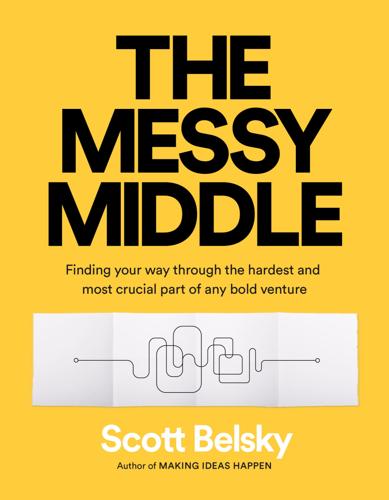
The Messy Middle: Finding Your Way Through the Hardest and Most Crucial Part of Any Bold Venture
by
Scott Belsky
Published 1 Oct 2018
However, sometimes the formal nature of a meeting or long email can make a small issue seem like a bigger deal than it actually is. Knowing what to say and when to say it is incredibly important to maintaining relationships. But it’s not enough. How we say it is just as vital. As the trope goes, “The medium is the message.” Before shooting a blasé email to a new client or pinging a colleague about a problem on Slack, consider the following: Is this a one-way share of information or is it conversational? Email is a great way of blasting off information for people to consider on their own schedule; they can respond whenever they like, and you are likewise not pressured to reply until you’ve gathered your thoughts.
…
DELEGATE, ENTRUST, DEBRIEF, AND REPEAT. The problem is that, in the heat: David Marquet, “The Counterintuitive Art of Leading by Letting Go,” 99U, accessed March 23, 2018, https://99u.adobe.com/articles/43081/the-counter-intuitive-art-of-leading-by-letting-go. KNOW HOW AND WHEN TO SAY IT. “The medium is the message”: Marshall McLuhan, Understanding Media: The Extensions of Man, (New York: McGraw-Hill, 1964). “means that our body”: Vanessa Van Edwards, “3 Tips for Women to Improve Their Body Language at Work,” Forbes, May 21, 2013, www.forbes.com/sites/yec/2013/05/21/3-tips-for-women-to-improve-their-body-language-at-work/#7d8f65c98153.
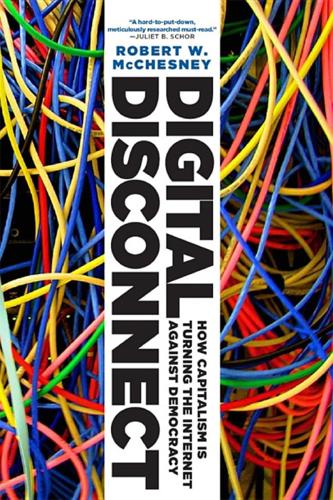
Digital Disconnect: How Capitalism Is Turning the Internet Against Democracy
by
Robert W. McChesney
Published 5 Mar 2013
In the mid-twentieth century, he wrote long studies on the importance of communication in shaping the course of human history.10 Innis argued that modes of communication and communication technologies were of central importance in understanding human development and that they had profound intrinsic biases. Marshall McLuhan was an acolyte of Innis, though this Canadian English professor altered Innis’s arguments. McLuhan is best known for his notion that the “medium is the message,” that the nature of media content derives from the structure and technology of the medium. The dominant media technology defines a society, he said, changing the very way we think and the way that human societies operate.11 His work was very influential on innumerable thinkers, including Neil Postman, who argued that television had an innate bias toward superficiality.12 “Every intellectual technology,” as Nicholas Carr puts it, “embodies an intellectual ethic, a set of assumptions about how the human mind works or should work.”
…
Harold Innis, Political Economy in the Modern State (Toronto: Ryerson Press, 1946), Empire and Communications (Oxford: Clarendon Press, 1950), and The Bias of Communication (Toronto: University of Toronto Press, 1951). 11. See Eric McLuhan and Frank Zingrone, eds., Essential McLuhan (New York: Basic Books, 1995); Marshall McLuhan, Understanding Media: The Extensions of Man (1964; Cambridge: MIT Press, 1999, intro. Lewis H. Lapham); Marshall McLuhan and Quentin Fiore, The Medium Is the Message: An Inventory of Effects (New York: Bantam Books, 1967); and Marshall McLuhan, The Gutenberg Galaxy: The Making of Typographic Man (Toronto, University of Toronto Press, 1962). Another classic in this tradition is Jerry Mander, Four Arguments for the Elimination of Television (New York: Quill, 1978).

Stolen Focus: Why You Can't Pay Attention--And How to Think Deeply Again
by
Johann Hari
Published 25 Jan 2022
In the 1960s, the Canadian professor Marshall McLuhan talked a lot about how the arrival of television was transforming the way we see the world. He said these changes were so deep and so profound that it was hard to really see them. When he tried to distill this down into a phrase, he explained that “the medium is the message.” What he meant, I think, was that when a new technology comes along, you think of it as like a pipe—somebody pours in information at one end, and you receive it unfiltered at the other. But it’s not like that. Every time a new medium comes along—whether it’s the invention of the printed book, or TV, or Twitter—and you start to use it, it’s like you are putting on a new kind of goggles, with their own special colors and lenses.
…
GO TO NOTE REFERENCE IN TEXT one that was also mulled, in a different way, by Nicholas Carr in his book: N. Carr, The Shallows: How the Internet Is Changing the Way We Think, Read and Remember (London: Atlantic Books, 2010), 6. GO TO NOTE REFERENCE IN TEXT “the medium is the message”: Gerald Emanuel Stern, ed., McLuhan: Hot & Cool (New York: Dial Press, 1967), 20, 23, 65, 212–13, 215. GO TO NOTE REFERENCE IN TEXT one of his studies found that the more a child is read storybooks: R. A. Mar et al., “Exposure to Media and Theory-of-Mind Development in Preschoolers,” Cognitive Development 25, no. 1 (2010): 69–78.

The Rise of the Network Society
by
Manuel Castells
Published 31 Aug 1996
What TV represented, first of all, was the end of the Gutenberg Galaxy – that is, of a system of communication essentially dominated by the typographic mind and the phonetic alphabet order.18 For all his critics (generally turned off by the obscurity of his mosaic language), Marshall McLuhan struck a universal chord when, in all simplicity, he declared that the “medium is the message”: The mode of TV image has nothing in common with film or photo, except that it offers also a nonverbal gestalt or posture of forms. With TV, the viewer is the screen. He is bombarded with light impulses that James Joyce called “The Charge of the Light Brigade”… The TV image is not a still shot.
…
From the perspective of the user (both as receiver and sender, in an interactive system), the choice of various messages under the same communication mode, with easy switching from one to the other, reduces the mental distance between various sources of cognitive and sensorial involvement. The issue at stake is not that the medium is the message: messages are messages. And because they keep their distinctiveness as messages, while being mixed in their symbolic communication process, they blur their codes in this process, creating a multifaceted semantic context made of a random mixture of various meanings. Finally, perhaps the most important feature of multimedia is that they capture within their domain most cultural expressions, in all their diversity.
…
Mansfield, Edwin (1982) Technology Transfer, Productivity, and Economic Policy, Englewood Cliffs, NJ: Prentice-Hall. Marceau, Jane (ed.) (1992) Reworking the World: Organisations, Technologies, and Cultures in Comparative Perspective, Berlin: Walter De Gruyter. Markoff, John (1995) “If the medium is the message, the message is the Web”, The New York Times, 20 November: A1, C5. —— (1999a) “Tiniest circuits hold prospects of explosive computer speeds”, The New York Times, July 16: A1–C17. —— (1999b) “A renaissance in computer science: chip designers search for life after silicon”, The New York Times, July 19: C1–C8.
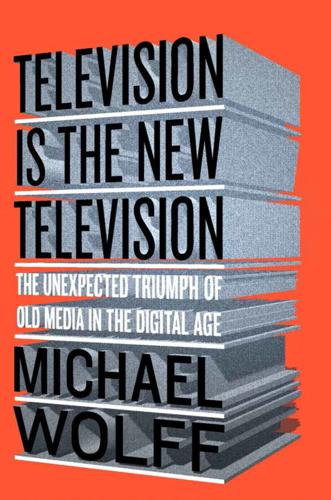
Television Is the New Television: The Unexpected Triumph of Old Media in the Digital Age
by
Michael Wolff
Published 22 Jun 2015
The devices themselves mean that digital media executives become as reliant—or more reliant—on writers, actors, directors, and producers as on programmers. 13 MORE BOXES “Digital convergence” turns out not so much to be about bringing computing to your television but about bringing more television to your television. Accept that the medium is the message (in Douglas Coupland’s succinct explanation of Marshall McLuhan’s still opaque aphorism—more than half a century later still opaque: “The ostensible content of all electronic media is insignificant; it is the medium itself that has the greater impact on the environment, a fact bolstered by the now medically undeniable fact that the technologies we use every day begin, after a while, to alter the way our brains work, and hence the way we experience the world”), but what is the medium?

The Dice Man
by
Luke Rhinehart
Published 1 Jan 1971
Lil even enjoyed the dice's sudden passion for awkward sexual positions, although when the dice ordered me to penetrate her from thirteen distinctly different positions before reaching my climax, she became quite angry as I was trying to maneuver her into position eleven. When she wondered why I was getting so many strange whims these days, I suggested that perhaps I was pregnant. But the medium is the message, and the dice decisions, no matter how pleasant they might sometimes be to Lil or Arlene or others, acted to separate me from people. Sexual dice decisions were particularly effective in destroying natural intimacy X" convincing a woman that one awkward sexual position is all 'that will satisfy you when she feels otherwise).
…
In so far as I'm the Dice Man I can write easily in almost any form the Die chooses, but as serious, old, ambitious Luke, I run into as many blocks as a rat in an insoluble maze. Obedience of the Die implies with every fall that rational, purposive man doesn't know what he's doing so he might as well relax and enjoy the fumbling Die. `The medium is the message,' once said the noted psychic Edgar Cayce, and so is mine. Walk on, I've learned. I let my pen and the Die do what my mind boggles at doing. The falling Die and moving pen think for themselves and the interposition of ego, artistic conscience, style or organization usually weighs things down.
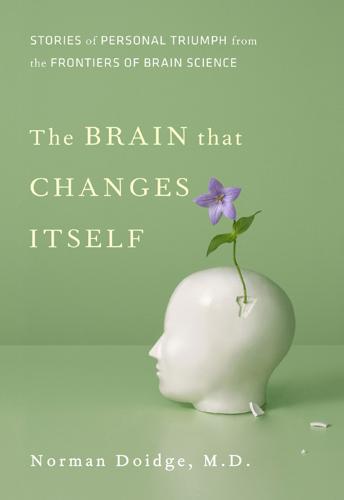
The Brain That Changes Itself: Stories of Personal Triumph From the Frontiers of Brain Science
by
Norman Doidge
Published 15 Mar 2007
Most people think that the dangers created by the media are a result of content. But Marshall McLuhan, the Canadian who founded media studies in the 1950s and predicted the Internet twenty years before it was invented, was the first to intuit that the media change our brains irrespective of content, and he famously said, “The medium is the message.” McLuhan was arguing that each medium reorganizes our mind and brain in its own unique way and that the consequences of these reorganizations are far more significant than the effects of the content or “message.” Erica Michael and Marcel Just of Carnegie Mellon University did a brain scan study to test whether the medium is indeed the message.
…
Harvard Business Review, January, 1–9. brain exercises to treat attention deficit disorder: R. G. O’Connell, M. A. Bellgrove, P. M. Dockree, and I. H. Robertson. 2005. Effects of self alert training (SAT) on sustained attention performance in adult ADHD. Cognitive Neuroscience Society, Conference, April, poster. “The medium is the message”: M. McLuhan, 1964/1994; W. T. Gordon, ed. Understanding media: The extensions of man, critical edition. Corte Madera, CA: Ginkgo Press, 19. brain scan study to test whether the medium is indeed the message: E. B. Michael, T. A. Keller, P. A. Carpenter, and M. A. Just. 2001. fMRI investigation of sentence comprehension by eye and by ear: Modality fingerprints on cognitive processes.

The View From Flyover Country: Dispatches From the Forgotten America
by
Sarah Kendzior
Published 24 Apr 2015
Keller’s aversion to social media is common among media’s old guard, who believe it has eroded standards of ethics and behavior. Outlets like The Atlantic regularly run pieces such as “Is Google making us stupid?” or “Is Facebook making us lonely?” (According to researchers, it is not.) “The medium is the message,” Marshall McLuhan famously said. In the digital age, condemning the medium is often shorthand for condemning not only the message but the messenger—and her right to speak. Twitter, which is extremely popular among young African Americans, functions as a public gathering space for marginalized groups to rally under common causes—one of which is countering cruel and inaccurate portrayals of them found in mainstream media.

The Message
by
Ta-Nehisi Coates
Published 2 Oct 2024
Paulo Freire wrote of the “banking” system of education, in which students are treated as receptacles for information and judged on how efficiently—how “meekly”—they “receive, memorize, and repeat” that information. A teacher delivers the student information and the student succeeds by repeating it. But the medium is the message: What is being learned by students is not just the facts they memorize but the purpose of this knowledge: The more students work at storing the deposits entrusted to them, the less they develop the critical consciousness which would result from their intervention in the world as transformers of that world.

Intertwingled: The Work and Influence of Ted Nelson (History of Computing)
by
Douglas R. Dechow
Published 2 Jul 2015
We can now take for granted following stories with multiple endings, or choosing our own paths through narratives, poems that shuffle themselves into different shades of meaning, multi-stream multiscreen fiction with multitasking audience members each finding their own meanings, process pieces that once set in motion will continue to reveal additional evolutions, algorithmic music generators that never repeat… These kinds of meta-artistic creations point us toward new uninhabited potentials for expressing our experience the way the mind knows it subjectively, the way we think that we think we perceive. I guess this is sort of an ultimate case of “The medium is the message.” Ted created new media initially because he needed them as an artistic being. Then instead of populating them with his own art, he made his life’s work the struggle to give us as much freedom of structure as he could, so we can express, interconnect and begin to capture better the ways we experience thought in our minds.

Survival of the Richest: Escape Fantasies of the Tech Billionaires
by
Douglas Rushkoff
Published 7 Sep 2022
One level above that, an aggregator of those aggregators (Kayak, Orbitz) can show you which aggregator is doing this the best. Don’t focus on the content, experts like O’Reilly insisted, but the platform on which everyone posts the content. And if there are already a bunch of platforms, become the platform of platforms. “The medium is the message” became the business mantra for The Mindset, while Marshall McLuhan himself earned a posthumous place on the Wired masthead as the magazine’s “patron saint.” According to Peter Thiel, any new business idea should be 10x better than what’s already out there—literally, an order of magnitude better.
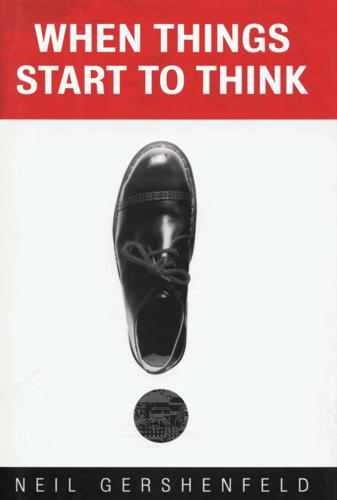
When Things Start to Think
by
Neil A. Gershenfeld
Published 15 Feb 1999
An education that forces people to specialize in hardware, or software, sends them out into the world with an erroneous impression that the two are easily separated. It is even embodied in our legal code, in the workings of the U.S. Patent Office. A patent must scrupulously distinguish between apparatus claims, on hardware, and method claims, on software. This means that "the medium is the message" is actually illegal: the message must be separated from the medium for patent protection. The best patent examiners recognize that new technology is stretching the boundaries of old rules, and are flexible about interpreting them. The worst examiners refuse to accept that a single entity can simultaneously embody a physical apparatus and a logical method.
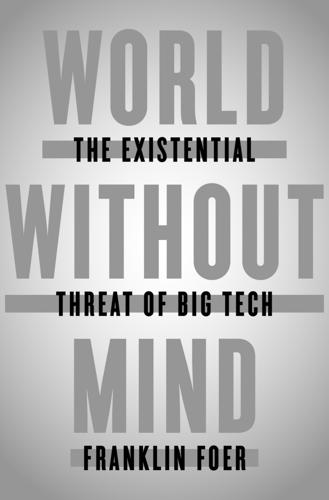
World Without Mind: The Existential Threat of Big Tech
by
Franklin Foer
Published 31 Aug 2017
There was a more personal form of fragmentation that plagued postwar America, too—a sense that all the paper-pushing and file cabinets had divided workers from their creativity, rendering them miserable, isolated automatons. But that plague of alienation, McLuhan suggested, was hardly implacable. The healing powers of the network could be found in McLuhan’s famous maxim: The medium is the message. Technology was the thing that mattered. He heaped blame upon Gutenberg’s invention, print, a medium he believed divided the world, isolating us from our fellow humans in the antisocial act of reading. “The alphabet is a technology of visual fragmentation and specialization,” he lamented.

Insanely Great: The Life and Times of Macintosh, the Computer That Changed Everything
by
Steven Levy
Published 2 Feb 1994
This was an unconventional question in those days, when it was rarely assumed that ordinary people would ever have reason to belly up to a computer keyboard. But Kay already was pondering ideas like people relating to a computer intimately. He found himself reading Marshall McLuhan's Understanding Media and pondering its seminal koan, "The medium is the message." Then he had his flash of enlightenment, "a shock that reverberates even now," he wrote over twenty years later in The Art of Human-Computer Interaction: The computer is a medium! I had always thought of it as a tool, perhaps a vehicle-a much weaker conception. What McLuhan was saying is that if the personal computer is truly a new medium then the very use of it would actually change the thought patterns of an entire civilization.

More Guns, Less Crime: Understanding Crime and Gun-Control Laws
by
John R. Lott
Published 15 May 2010
“The more guns people are carrying, the more likely it is that ordinary confrontations will escalate into violent confrontations” (William Tucker, “Maybe You Should Carry a Handgun,” the Weekly Standard, Dec. 16, 1996, p. 30). 46. For these arguments, see P. J. Cook, “The Role of Firearms in Violent Crime,” in M. E. 372 | N OT E S TO PA G E 1 2 Wolfgang and N. A. Werner, eds., Criminal Violence (Newbury, NJ: Sage Publishers, 1982); and Franklin Zimring, “The Medium Is the Message: Firearm Caliber as a Determinant of Death from Assault,” Journal of Legal Studies 1 (1972): 97–124. 47. P. J. Cook, “The Technology of Personal Violence,” Crime and Justice: Annual Review of Research 14 (1991): 57, 56 n. 4. Cook reported 82,000 defensive uses for an earlier period. The irony of Cook’s position here is that his earlier work argued that the National Crime Victimization Survey radically underreports other violence-related events, including domestic violence, rapes, and gunshot woundings linked to criminal acts; see Gary Kleck, Targeting Guns (Hawthorne, NY: Aldine de Gruyter Publishers, 1997).
…
“An Economic Analysis of Crime and Punishment in England and Wales, 1894–1967.” Journal of Political Economy 86 (1978). Wright, James D., and Peter Rossi. Armed and Considered Dangerous: A Survey of Felons and Their Firearms. New York: Aldine de Gruyter Publishers, 1986. Zimring, Franklin. “The Medium Is the Message: Firearm Caliber as a Determinant of Death from Assault.” Journal of Legal Studies 1 (1972). SUPPLEMENTARY ENTRIES FOR SECOND EDITION Ayres, Ian, and John J. Donohue III. “Nondiscretionary Concealed Weapons Laws: A Case Study of Statistics, Standards of Proof, and Public Policy.” American Law and Economics Review 1, nos. 1–2 (Fall 1999): 436–70.

Nothing to Hide: The False Tradeoff Between Privacy and Security
by
Daniel J. Solove
Published 28 Jun 2011
For a compelling critique of the envelope-content distinction, see Paul Ohm, The Rise and Fall of Invasive ISP Surveillance, 2009 U. Ill. L. Rev. 1417, 1453–55 (2009). But for a defense of the distinction, see Orin S. Kerr, A User’s Guide to the Stored Communications Act and a Legislator’s Guide to Amending It, 72 Geo. Wash. L. Rev. 1208, 1229 n.142 (2004). 11. I am referring to McLuhan’s famous phrase “the medium is the message.” Marshall McLuhan, Understanding Media: The Extensions of Man 7 (1964). 12. 18 U.S.C. § 3127(3) (amended 2001). 13. 18 U.S.C. § 3127(3), amended by USA PATRIOT Act, Pub. L. No. 107-56, § 216(c) (2001). 14. Kerr, Patriot Act, supra, at 638. 15. 18 U.S.C. § 3127(3). 16. USA PATRIOT Act § 215 (codified at 50 U.S.C. §1861(a)(1)). 17.
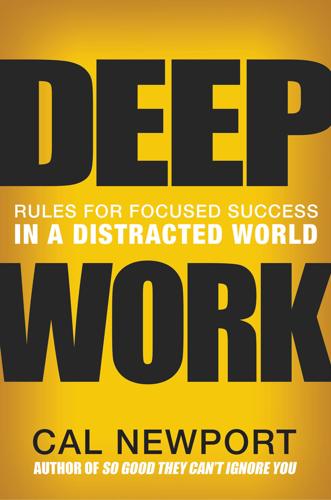
Deep Work: Rules for Focused Success in a Distracted World
by
Cal Newport
Published 5 Jan 2016
The curmudgeons among us are vaguely uneasy about the attention people pay to their phones, and pine for the days of unhurried concentration, while the digital hipsters equate such nostalgia with Luddism and boredom, and believe that increased connection is the foundation for a utopian future. Marshall McLuhan declared that “the medium is the message,” but our current conversation on these topics seems to imply that “the medium is morality”—either you’re on board with the Facebook future or see it as our downfall. As I emphasized in this book’s introduction, I have no interest in this debate. A commitment to deep work is not a moral stance and it’s not a philosophical statement—it is instead a pragmatic recognition that the ability to concentrate is a skill that gets valuable things done.
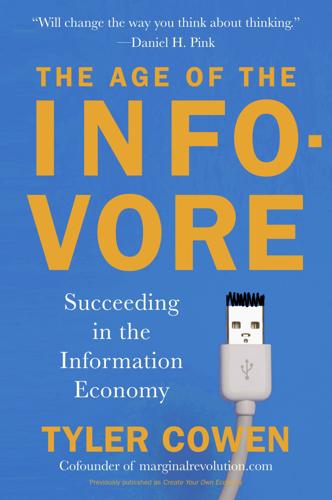
The Age of the Infovore: Succeeding in the Information Economy
by
Tyler Cowen
Published 25 May 2010
We are better off for this change and it is part of a broader trend of how the production of value—including beauty, suspense, and education—is becoming increasingly interior to our minds. 4 IM, CELL PHONES, AND FACEBOOK It’s not just that we have more music, more text, more websites, and more TV for mixing our personal cultural blends. We also have new media for experiencing and expressing ourselves and for building the richness of our lives. Marshall McLuhan asserted that “the medium is the message” and later economists Harold Innis and Leonard Dudley showed how communications media shape human lives. Over the last fifteen years the rapid advance of digital technology has accelerated this process beyond expectations. Many of us are still trying to catch up, so I intend this chapter to be a simple guide to how some of the new communications media—such as instant messaging, cell phone texting, and micro-blogging—matter for the emotional side of our lives.
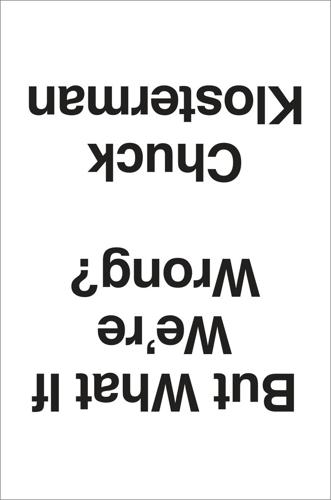
But What if We're Wrong? Thinking About the Present as if It Were the Past
by
Chuck Klosterman
Published 6 Jun 2016
As far as the world is concerned, it absolutely happened. Even if it didn’t happen, it happened. This is the world that is not there. Don’t Tell Me What Happens. I’m Recording It. Television is an art form where the relationship to technology supersedes everything else about it. It’s one realm of media where the medium is the message, without qualification. TV is not like other forms of consumer entertainment: It’s slippier and more dynamic, even when it’s dumb. We know people will always read, so we can project the future history of reading by considering the evolution of books. (Reading is a static experience.) We know music will always exist, so we can project a future history of rock ’n’ roll by placing it in context with other genres of music.

Yes Please
by
Amy Poehler
I wore pajamas and pigtails and made my face a little dirty. Sexy stuff. We lived on a street called Strathmore and our motto was “Live More, Love More, Strath More.” I learned about Charles Busch and Kate Bush. I sat with the cool Jesuit priests and talked about Edna St. Vincent Millay. I took classes like “The Medium Is the Message” and “The Male Lens.” I carved out a pretty groovy off-campus curriculum in what was a very competitive academic program. I spent my days directing scenes from True West and my nights writing sketches about bad cafeteria food. I studied Shakespeare and learned to control my voice, and at night I huddled with a bunch of misfits and practiced being stupid on purpose.
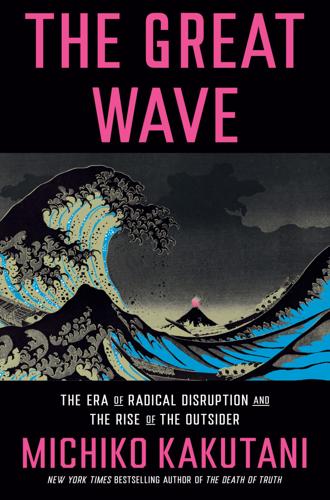
The Great Wave: The Era of Radical Disruption and the Rise of the Outsider
by
Michiko Kakutani
Published 20 Feb 2024
Remember how the Arab Spring was ignited by the desperate act of an impoverished Tunisian fruit vendor named Mohammed Bouazizi, who set himself on fire on December 17, 2010, after continual harassment from local authorities who refused to give him a permit to sell his wares, confiscated his goods, and publicly humiliated him. * * * — As Marshall McLuhan and Neil Postman have pointed out, new information technologies create new environments that reformat how we apprehend the world; in McLuhan’s famous words, “the medium is the message.” Johannes Gutenberg did not invent the printing press—movable type, using pieces of ceramic, was pioneered in China in the eleventh century—but his magical printing machine, which began cranking out Bibles around 1452, unleashed a great wave of change. It fundamentally altered how knowledge was shared, stored, and retrieved, and in the process spurred a great wave of cultural and political transformation that the internet has since turned into a tsunami.

Social Life of Information
by
John Seely Brown
and
Paul Duguid
Published 2 Feb 2000
Newspapers, for example, appear to be freighted with news that they carry out to readers. But, as we suggested in chapter 1, news is not some naturally occurring object that journalists pick up and stick on paper. It is made and shaped by journalists in the context of the medium and the audience. There's no need to go as far as Marshall McLuhan's claim that the "medium is the message" to see that the medium is not an indifferent carrier here. 17 The newspaper, then, is rather like the librarynot simply a collection of news, but a selection and a reflection. And the selection process doesn't just "gather news," but weaves and shapes, developing stories in accordance with available space and Page 186 priorities.
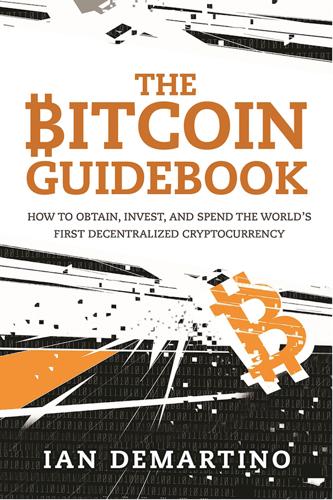
The Bitcoin Guidebook: How to Obtain, Invest, and Spend the World's First Decentralized Cryptocurrency
by
Ian Demartino
Published 2 Feb 2016
In his 1964 book Understanding Media, McLuhan described an interconnected and interactive form of media that sounds shockingly similar to the Internet and, one might argue, virtual reality. Earlier, in The Gutenberg Galaxy, he had coined the term “global village,” which is still used to describe the Internet today. McLuhan also coined the phrase “The medium is the message,” meaning that the way information is conveyed in society has a more profound effect than the actual information. These concepts are starting to engage with the question of how culture would work in an electronically connected society, but McLuhan was primarily concerned with communication and media, not economics.

The Internet Is Not the Answer
by
Andrew Keen
Published 5 Jan 2015
And the truth about the Battery—whether or not it has had a chance to get its jeans on—is that the well-meaning but deluded Birches have unintentionally created one of the least diverse and most exclusive places on earth. The twentieth-century media guru Marshall McLuhan, who, in contrast with the Birches, was distinguished by his prescience, famously said that the “medium is the message.” But on Battery Street in downtown San Francisco, it’s the building that is the message. Rather than an unclub, the Battery is an untruth. It offers a deeply troubling message about the gaping inequalities and injustices of our new networked society. In spite of its relaxed dress code and self-proclaimed commitment to cultural diversity, the Battery is as opulent as the most marble-encrusted homes of San Francisco’s nineteenth-century gilded elite.
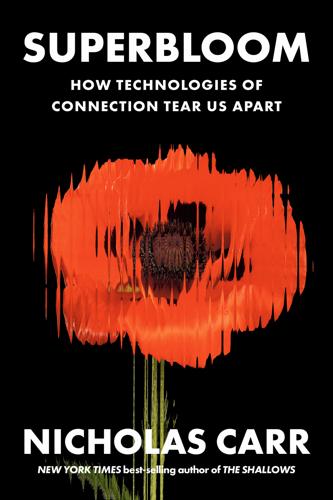
Superbloom: How Technologies of Connection Tear Us Apart
by
Nicholas Carr
Published 28 Jan 2025
The Yale professor John Durham Peters points out that a crucial line in Cooley’s article—“social influences act through a mechanism; and the character of their action depends upon the character of the mechanism”—could have been written by McLuhan. It means something very similar to the later writer’s famous dictum “the medium is the message.” Both men saw that how we communicate is even more important than what we communicate. Both found in the technology of communication an “engine of history,” as Peters puts it.5 But Cooley’s emphasis was different from McLuhan’s. McLuhan was primarily interested in how communication technologies mold individual consciousness by altering sense perceptions and patterns of cognition.

Hard Landing
by
Thomas Petzinger
and
Thomas Petzinger Jr.
Published 1 Jan 1995
Whether a cable television system, a complex of automatic teller machines, or an airline computer reservation system, a network exists not as an end in itself but as a convenience to those who create and consume an underlying product: a Hollywood movie, a banking service, a seat on an airplane. The sociologist Marshall McLuhan’s 1964 assertion that “the medium is the message” is by more recent standards a quaintly over-enthusiastic characterization of the Information Age. Even if the medium is the message, it is not the product. Though it may enhance value, it creates nothing. By themselves computers, networks, and systems can no more fly people between cities than they can print money or direct actors. Yet in the mid-1980s it almost seemed otherwise to Frank Lorenzo.

What Would Google Do?
by
Jeff Jarvis
Published 15 Feb 2009
He almost single-handedly turned around the reputation of even this company online. Your products and your customers are your ads, and so are your employees. The best way to burnish a brand is no longer to rub up against media properties like Vogue or the Super Bowl. The best way today is to rub up against people: Sally the blogger or Joe the Facebook friend. The medium is the message and the customer is the medium. Sally is the new Vogue. Separate the functions of an ad agency today—media buying, research and data, and creative. What happens to each? Media buying, under Locke’s theory, now becomes more important than messaging. When your customer is your ad, media doesn’t mean content, it means people.

Made to Break: Technology and Obsolescence in America
by
Giles Slade
Published 14 Apr 2006
Print, McLuhan wrote, rendered oral culture (the preceding mode of consciousness) obsolete. He also believed that the electronic media of the twentieth century—telegraph, telephone, movies, radio, television,and digital computers—had brought mankind to the threshold of a new revolution in consciousness. McLuhan’s claim that “the medium is the message” refle ts his conviction that whatever the surface content of a specifi message, it is the technology of its medium that has the most lasting formative impact on the consciousness of human receivers: “If a technology is introduced either from within or from without a culture, and if it gives new stress or ascendancy to one or another of our senses, the ratio among all our senses is altered.
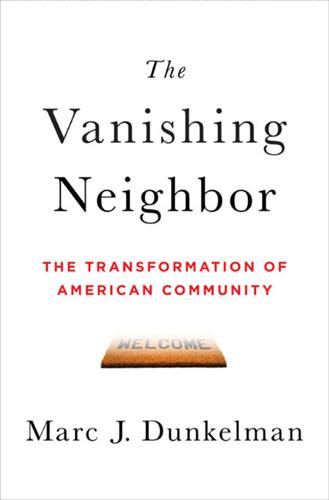
The Vanishing Neighbor: The Transformation of American Community
by
Marc J. Dunkelman
Published 3 Aug 2014
Friedman, The Lexus and the Olive Tree (New York: Anchor Books, 2000). 2Marshall McLuhan and Bruce R. Powers, The Global Village (New York: Oxford University Press, 1989). 3Thomas L. Friedman and Michael Mandelbaum, That Used to Be Us (New York: Farrar, Straus and Giroux, 2011), 58, 62. 4McLuhan is also famous for the phrase “the medium is the message.” 5Charles Murray, Coming Apart: The State of White America 1960–2010 (New York: Crown Forum, 2012), 238. 6Murray, Coming Apart. 7Personal communication from Herbert Gans, July 26, 2012. 8R. I. M. Dunbar, “Coevolution of Neocortical Size, Group Size, and Language in Humans,” Behavioral and Brain Sciences 16 (1993). 9Jenna Wortham, “WhatsApp Deal Bets on a Few Fewer ‘Friends,’ ” New York Times, February 21, 2014. 10Barry Wellman and Bernie Hogan et al., “Connected Lives: The Project,” chapter 8 in Networked Neighbourhoods, ed.

Black Code: Inside the Battle for Cyberspace
by
Ronald J. Deibert
Published 13 May 2013
Its central thesis is that the instructions encoded in the software that effectively run the Internet shape and constrain what is communicated just as laws and regulations do. Although Lessig did not emphasize it, that thesis is part of a larger tradition of theorizing about communications technology associated most prominently with Canadian academics Marshall McLuhan (“the medium is the message”) and Harold Innis (“the bias of communications”). According to this tradition, communications technologies are rarely neutral and their material properties – the wires, cables, machines themselves, and so forth – have direct societal impacts. Think about this for a moment. To what degree does the machine in front of you, that you log onto and operate daily, now determine your behaviour, what you do and don’t do?

A World Without Email: Reimagining Work in an Age of Communication Overload
by
Cal Newport
Published 2 Mar 2021
One of the better-known determinist books is Neil Postman’s 1985 classic, Amusing Ourselves to Death. In this short treatise, Postman argues that the format through which mass media is delivered can impact the way a culture thinks about the world. (If this reminds you of Marshall McLuhan’s famed claim that “the medium is the message,” you won’t be surprised to learn that Postman studied under McLuhan.) Postman uses this concept to argue, among other points, that the impact of the printing press is deeper than we realize. The standard narrative about this invention is that mass-produced pamphlets and books allowed information to spread faster and farther, speeding up the evolution of knowledge that culminated in the Age of Reason.

Work! Consume! Die!
by
Frankie Boyle
Published 12 Oct 2011
If you want 11 million viewers on a Saturday night you’d better have some morons kick a ball between two sticks or a muscular guy outrun a fireball or hold a fucking karaoke competition. That’s just the socially acceptable options. You could stick a porno on and it would out-rate EastEnders. Television is just a distraction, really, a jangling set of keys hoisted nightly in front of our stupid, drooling faces. Marshall McLuhan said, ‘The medium is the message,’ meaning that the way TV makes us think – the shorter attention span, the dullness to sensation – is more important than its content. Railways changed the Wild West and it didn’t really matter if the trains were carrying wood or marshmallows. We don’t even retain the information. Think about how many TV shows you’ve seen in your life about Ancient Egypt.
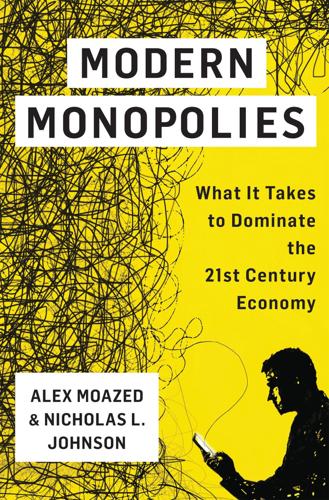
Modern Monopolies: What It Takes to Dominate the 21st Century Economy
by
Alex Moazed
and
Nicholas L. Johnson
Published 30 May 2016
However, the reason that platforms matter today has everything to do with technology. To be clear, we’re not advocating technological determinism, which assumes that technology determines the development of social structures, economic activities, and cultural values. This idea is the essence of Marshall McLuhan’s famous phrase, “The medium is the message”—that the technology used to achieve something has more meaning than what you do with it. Although this notion certainly carries a grain of truth, it ignores the role that human actions and desires play in shaping how technologies develop and are used. Technology is not just a neutral tool.
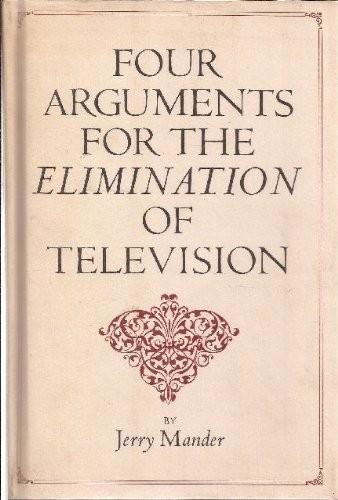
Four Arguments for the Elimination of Television
by
Jerry Mander
Published 1 Jan 1977
McLuhan, who saw so much, could have helped us see through that crap. Instead, because of his celebration of our electronic connection, our planetary-tribal village, he effec- 29 INTRODUCTION tively encouraged support for the techno-mystical-unification theme. His words entered the arena of talk show patter and word- play. "Hot and coo1." "The medium is the message." People struggled to find concrete meaning in these phrases. They became the basis of hundreds of conferences and thousands of cocktail party debates. Most people were satisfied that they understood something if they grasped that, because of tele- vision, we were now vibrating together to the same electronic drumbeat.
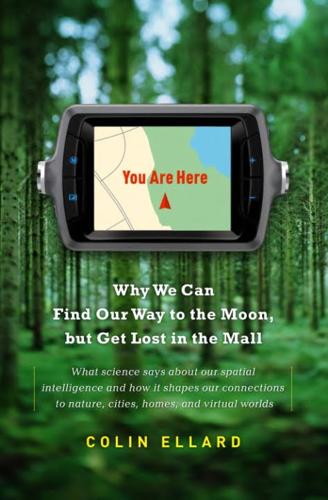
You Are Here: Why We Can Find Our Way to the Moon, but Get Lost in the Mall
by
Colin Ellard
Published 6 Jul 2009
But, just like rapid transit, the influence of electronic media on our perception of space is more complex than this. Spaces are connected to one another using sets of rules that have more to do with politics, power, and preference than with physics. When Marshall McLuhan, a pioneering Canadian thinker in media studies and author of the influential slogan “the medium is the message,” described the impact of new media as having converted the world into a kind of “global village,” this is precisely the kind of transformation in the use of space that he meant. Like villagers, we form allegiances, links, and unions with other individuals, but the far reach of invisible waves makes physical distance irrelevant to the formation of these connections.
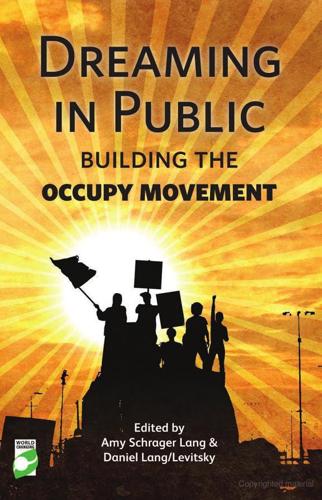
Dreaming in Public: Building the Occupy Movement
by
Amy Lang
and
Daniel Lang/levitsky
Published 11 Jun 2012
What is the relationship between the making and maintenance of Liberty Park in Lower Manhattan (its mail, its legal procedures, its noise statutes) with the making and maintenance of the broader ideas and actions of a growing movement that exists as much in the media and social networking as it does in disobedient reclamations of the commons? For a month and a half, it has been an almost-sacred tenet of OWS that the medium is the message, that the reclamation of privatized public space not only for engaged citizenship, but also for free food, shelter, clothing, healthcare, libraries, education, wifi and more, is OWS politics. Logistics, the claim goes, are politics. And yet even to those most dedicated to that position, it rarely feels like enough.
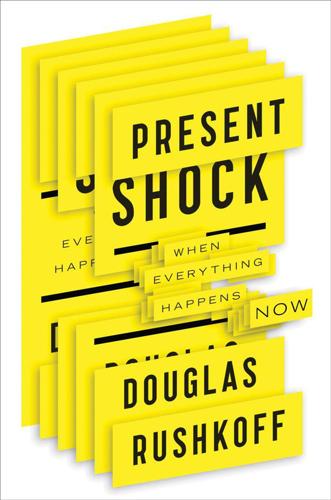
Present Shock: When Everything Happens Now
by
Douglas Rushkoff
Published 21 Mar 2013
Like a fluorescent lightbulb, which will perceptibly flicker at 60 hertz along with the alternating current of the house, digital technologies are almost perceptibly on/off. They create an environment, regardless of the content they are expressing. This is what Marshall McLuhan meant by “the medium is the message.” A lightbulb creates an environment, even though it has no content. Even without a slide or movie through which to project an image onto the wall, the light itself creates an environment where things can happen that otherwise wouldn’t. It is an environment of light. With digital technology, the environment created is one of choice.
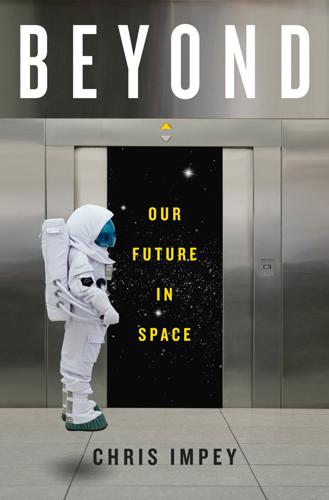
Beyond: Our Future in Space
by
Chris Impey
Published 12 Apr 2015
If you doubt that, recall that we can’t communicate with primates that share 99 percent of our DNA. Now imagine that we’re trying to communicate with aliens who might not even have DNA, aliens of unknown function and form. We assume that if they send radio signals, they must be intelligent. In other words, the choice of a means of communication is very telling. The medium is the message. The main approach to SETI continues to be radio astronomy. But the power of modern lasers suggests an alternative. If a civilization on a planet was using rapidly pulsed lasers to send signals rather than radio transmitters, the pulses might stand out against the steady light of the nearby star.
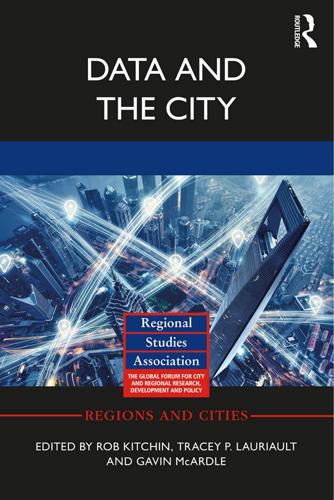
Data and the City
by
Rob Kitchin,Tracey P. Lauriault,Gavin McArdle
Published 2 Aug 2017
I propose that an applied material topology can help such analyses by challenging preconceived dualisms of code and data, or the digital and the physical realms, and by widening the array of permissible spatialities deployed in forthcoming research. Notes 1 McLuhan’s work, famously stating that ‘the medium is the message’, can be read as an early intervention into this predominant framing of media as a passive carrier (McLuhan 1994 [1964]). 2 Latour makes an analogous argument regarding sociologists’ various efforts to come to an arrangement between interaction- and structure-based perspectives: ‘The combination of two artifacts could only produce a third, yet more annoying, one’ (Latour 1996: 234).
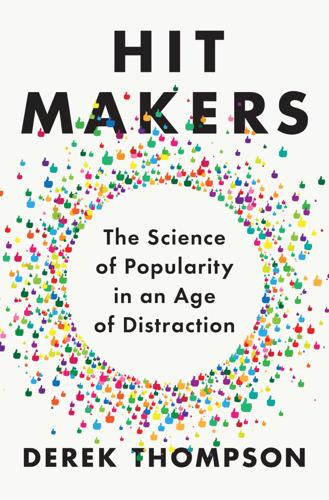
Hit Makers: The Science of Popularity in an Age of Distraction
by
Derek Thompson
Published 7 Feb 2017
At the end of the play, however, Roxane realizes that she has fallen for the words themselves. The one she truly loves is the author of the letters—the ugly Cyrano, not the handsome Christian. The play sprang to mind one evening during the research for this book. I was writing the next chapter, which is, in large part, about Cyrano’s singular gift—pleasing an audience. “The medium is the message,” as Marshall McLuhan said once and everybody else repeated a million times. The Internet and its social network inhabitants are forces of amplification, extending our messages to more ears and eyes. What I wanted to know was whether people change what they talk about when they think they’re addressing a large group of people, as they often do on Facebook, Reddit, and Twitter.
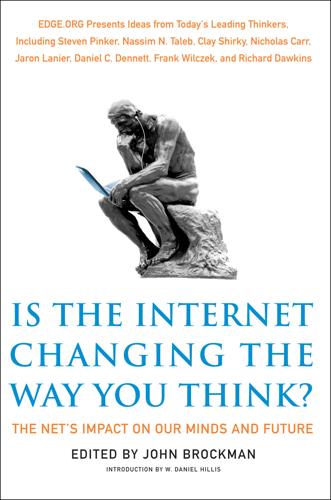
Is the Internet Changing the Way You Think?: The Net's Impact on Our Minds and Future
by
John Brockman
Published 18 Jan 2011
Beyond that, there are numerous brilliant thinkers, researchers, and inventors who would never contemplate writing a book. They, too, now have the opportunity to become one of the world’s teachers. Their efforts, conveyed vividly from their own mouths, will bring knowledge, understanding, passion, and inspiration to millions. When Marshall McLuhan said, “The medium is the message,” he meant, among other things, that every new medium spawns its own unexpected units of communication. In addition to the Web page, the blog, and the tweet, we are witnessing the rise of riveting online talks, long enough to inform and explain, short enough for mass impact. The Web has allowed us to rediscover fire.

Reset
by
Ronald J. Deibert
Published 14 Aug 2020
(This family of theorizing is also known as “media ecology,” and adherents of it have formed a large professional network called the Media Ecology Association.) Innis and McLuhan both drew attention in their different ways to the material qualities of different modes of communication and how these material qualities affect the nature and quality of communications. McLuhan was fond of speaking in aphorisms, and one of his most famous, “the medium is the message,” was intended to encapsulate this thesis: the material properties of any particular communications technology affect the nature and character of the content of communications. Hence societies in which one particular mode of communication is predominant — the oral culture of ancient Greece or the print-based culture of early modern Europe — exhibit characteristics associated with those modes.
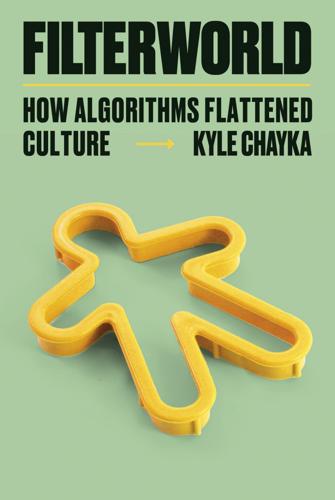
Filterworld: How Algorithms Flattened Culture
by
Kyle Chayka
Published 15 Jan 2024
We’re encouraged to forget the presence of algorithms. New technologies inevitably create new forms of behavior, but the behaviors are rarely those that the inventors expect. The technology has an inherent meaning of its own that eventually comes to the fore. Marshall McLuhan wrote his famous dictum “the medium is the message” in his 1964 book Understanding Media: The Extensions of Man. He meant that the structure of a new medium—electric light, the telephone, television—is more important than the content that travels through it. The telephone’s ability to connect people exceeds any particular conversation. “The ‘message’ of any medium or technology is the change of scale or pace or pattern that it introduces into human affairs,” McLuhan wrote.
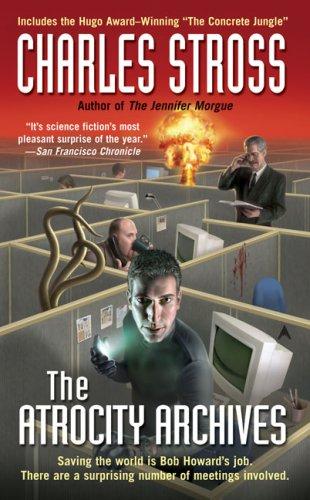
Atrocity Archives
by
Stross, Charles
Published 13 Jan 2004
Didn't she know Licencing and Compliance handles that on a blanket departmentwide basis? We were updated on it about a year ago." "We were--" I sit down heavily on the cheap plastic visitor's chair. "What are the chances this McLuhan guy put the idea into Harriet's mind in the first place? What are the chances it isn't connected?" "McLuhan. The medium is the message. SCORPION STARE. Why do I have a bad feeling about this?" Andy sends me a worried look. " 'Nother possibility, boss-man. What if it's an internal power play? The software audit's a cover, Purloined Letter style, hiding something fishy in plain sight where nobody will look at it twice until it's too late."

Binge Times: Inside Hollywood's Furious Billion-Dollar Battle to Take Down Netflix
by
Dade Hayes
and
Dawn Chmielewski
Published 18 Apr 2022
Every film was shot and edited in portrait and landscape, then stitched together and delivered in a single package to the phone. The video instantly switched when the user rotated the phone—allowing viewers to shift narrative perspective with a flip of the wrist. Director Zach Wechter exploited the ability to tell one story from two viewpoints in the Quibi film Wireless, a drama where the medium is the message. Ready Player One’s Tye Sheridan stars as a self-obsessed college student who is stranded in the Colorado mountains after crashing his car. His only hope of escape is his quickly dying phone. “When you hold the phone horizontally, you’ll see a traditional cinematic perspective of the story,” said Wechter, who used a special rig to capture a phone’s forward-facing and rear-facing cameras as well as the phone screen.
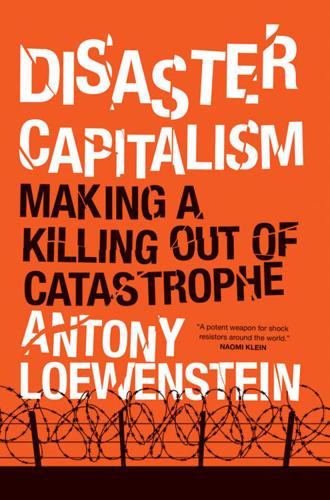
Disaster Capitalism: Making a Killing Out of Catastrophe
by
Antony Loewenstein
Published 1 Sep 2015
The aim of privatizing government itself has existed for decades, but the attacks of September 11, 2001, accelerated the process in the United States because the Bush administration saw its “war on terror” as a boon for the private sector. “Now wars and disaster responses are so fully privatized,” Klein argues, “that they are themselves the new market: there is no need to wait until after the war for the boom—the medium is the message.”15 These ideological changes are implemented by force, despite the routine opposition to them expressed by populations across the world—if they know about the policies at all. Resistance occurs because inefficiency, abuse, corruption, and death cloud the sunny rhetoric offered by privatization’s loudest defenders.16 Still, all too often, corporate power wins.

Machines of Loving Grace: The Quest for Common Ground Between Humans and Robots
by
John Markoff
Published 24 Aug 2015
He did, however, differ from Engelbart in his conception of cyberspace. Engelbart thought the intellectual relation between humans and information could be compared to driving a car; computer users would sail along an information highway. In contrast, Kay had internalized McLuhan’s insight that “the medium is the message.” Computing, he foresaw, would become a universal, overarching medium that would subsume speech, music, text, video, and communications. Neither of those visions found traction at SAIL. Les Earnest, brought to SAIL by ARPA officials in 1965 to provide management skills that McCarthy lacked, has written that many of the computing technologies celebrated as coming out of SRI and PARC were simultaneously designed at SAIL.

Sorting Things Out: Classification and Its Consequences
by
Geoffrey C. Bowker
and
Susan Leigh Star
Published 25 Aug 2000
This tension is itself collective, historical, and partially institutionalized. The medium of an information system is not just wires and plugs, bits and bytes, but also conventions of representation, information both formal and empirical. A system becomes a system in design and use, not the one without the other. The medium is the message, certainly, and it is also the case that both are political creations (Taylor and Van Every 1993). In Donna Haraway’s words, “No layer of the onion of practice that is technoscience is outside the reach of technology of critical interpretation and critical inquiry about positioning and location; that is the condition of embodiment and mortality.
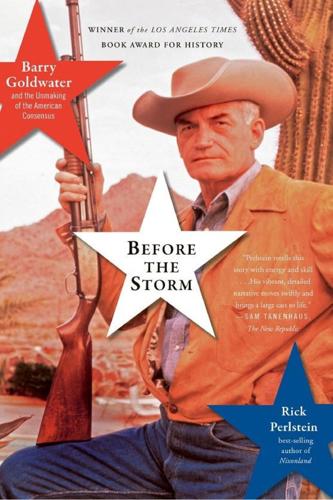
Before the Storm: Barry Goldwater and the Unmaking of the American Consensus
by
Rick Perlstein
Published 17 Mar 2009
They were convinced you could learn everything you needed to know about a product, which in this case happened to be a human being, in half a minute—the speed not of thought but of emotion. Bill Bernbach intuitively grasped the same insights that were making a Canadian literature professor named Marshall McLuhan the thinker of the moment. “The medium is the message,” went his gnomic injunction. A medium did not just neutrally deliver some preexisting bundle of information into the viewer’s brain; instead, each medium—storytelling, print, radio, television—conditioned users’ very perception in its own distinct way. A TV set was a box plunked in the middle of a living room, competing for attention with a dozen different household distractions.
…
Frank, The Conquest of Cool (Chicago: University of Chicago Press, 1997), 35-73. 386 For DDB’s work with the LBJ campaign, see Pete Hamill, “When the Client Is a Candidate,” NYTM, October 25, 1964; Jamieson, Packaging the Presidency, 169-220; and Edwin Diamond and Stephen Bates, The Spot: The Rise of Political Advertising on Television (Cambridge, Mass.: MIT Press, 1984), 121-47. 386 For the new policy on spots within programs, see Reinsch, Getting Elected, 189. Teddy White’s lament about the effect of TV on democracy is in The Making of the President 1960 (New York: Atheneum, 1961), 307. 386 “The medium is the message”: Marshall McCluhan, Understanding Media (New York: Signet, 1964). 387 Structure of DDB operation described in Hamill, “When the Client Is a Candidate.” Scrapping civil rights ads: Jamieson, Packaging the Presidency, 217. “Kids being born with two heads”: LBJT, 6407.II/1. 387 For interruptions of Dirksen, see AR, July 16, 1964; and WP, July 16, 1964. 387 BMG demonstration: AR, July 16, 1964; WP, July 16, 1964; Edwards, Goldwater, 266; and Mailer, “In a Blue Light.” 388 Minister in donkey costume is from author interview with Sara Jane Sayer. 388 For Scranton demonstration, see Wolf, William Warren Scranton, 120. 388 Nomination roll call in Proceedings, 357-73. 389 For Scranton concession, see Mailer, “In a Blue Light”; and Edwards, Goldwater, 266 (for Goldwater quotes). 389 For Bill Miller, see “Goldwater’s Running Mate,” NYT, July 17, 1964; Dom Bonafede, “A Long Way from Lockport, N.Y., to ... ,” NYHT, September 20, 1964; the speeches in Bill Miller Papers, Cornell University Special Collections, Box 68; and Congressional Quarterly, The Public Records of Barry M.
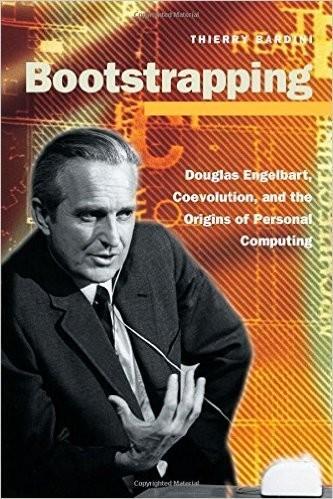
Bootstrapping: Douglas Engelbart, Coevolution, and the Origins of Personal Computing (Writing Science)
by
Thierry Bardini
Published 1 Dec 2000
Another interestIng nugget was that children really need as much or more power than adults were wIllIng to settle for when using a time-sharing system. The best that tIme-sharing has to offer is slow control of crude wire-frame green-tInted graphIcs and square-wave musIcal tones. The kids, on the other hand, are used to finger-paints, water colors, color televI- sIon, real musical instruments, and records. If "the medium is the message," the message of low bandwidth time-sharing IS "blah." (19 88 [1977],255-56) Here began, in thought at least, a long series of Kay's experiments with chil- dren and computers, not to mention the ongoing vision of children as the most accomplished and demanding users of personal computers.
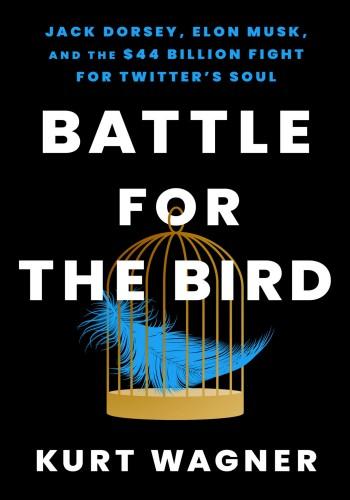
Battle for the Bird: Jack Dorsey, Elon Musk, and the $44 Billion Fight for Twitter's Soul
by
Kurt Wagner
Published 20 Feb 2024
after losing sixteen pounds in just three weeks: Emily Kirkpatrick, “Kim Kardashian Lost 16 Pounds in 3 Weeks to Fit into Marilyn Monroe’s Dress for the 2022 Met Gala,” Vanity Fair, May 2, 2022, https://www.vanityfair.com/style/2022/05/kim-kardashian-2022-met-gala-marilyn-monroe-dress-jfk-happy-birthday-diet-weight-loss. wore a white dress with the words “Tax the Rich” written in bright red on the back: Christi Carras, “AOC Defends Polarizing ‘Tax the Rich’ Met Gala Dress: ‘The Medium Is the Message,’ ” Los Angeles Times, September 14, 2021, https://www.latimes.com/entertainment-arts/story/2021-09-14/met-gala-2021-aoc-tax-the-rich-dress. “like I’m from Downton Abbey or something”: Jada Yuan, “In Austere Times, the Met Gala Returns to ‘Gilded’ Era,” Washington Post, May 3, 2022, https://www.washingtonpost.com/lifestyle/2022/05/02/met-gala-gilded-age-2022/.
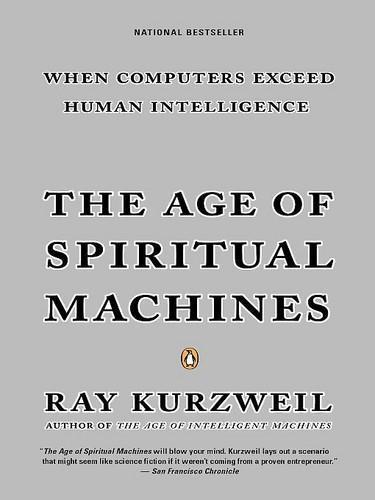
The Age of Spiritual Machines: When Computers Exceed Human Intelligence
by
Ray Kurzweil
Published 31 Dec 1998
Machines Who Think: A Personal Inquiry into the History and Prospects of Artificial Intelligence. San Francisco: W H. Freeman, 1979. McCulloch, Warren S. An Account of the First Three Conferences of Teleological Mechanisms. Josiah Macy, Jr. Foundation, 1947. ─ Embodiments of Mind. Cambridge, MA: MIT Press, 1965. McLuhan, Marshall. The Medium Is the Message. New York: Bantam Books, 1967. ─. Understanding Media: The Extension of Man. New York: McGraw-Hill, 1964. McRae, Hamish. The World in 2020: Power, Culture, and Prosperity. Cambridge, MA: Harvard Business School Press, 1994. Mead, Carver. Analog VLSI Implementation of Neural Systems. Reading, MA: Addison-Wesley, 1989.

Dealers of Lightning
by
Michael A. Hiltzik
Published 27 Apr 2000
Children, however, are used to finger paints, color television and stereophonic records, and they usually find the things that can be accomplished with a low-capacity time-sharing system insufficiently stimulating to maintain their interest.” Or as Kay and his colleague Adele Goldberg wrote later: “If ‘the medium is the message,’ then the message of low-bandwidth time-sharing is ‘blah.’” When his turn came to design a programming language at PARC, he would invest it with several unmistakable elements of Papert’s system: its visual feedback, its accessibility to novices, and its orientation to the wonder and creativity of childhood.
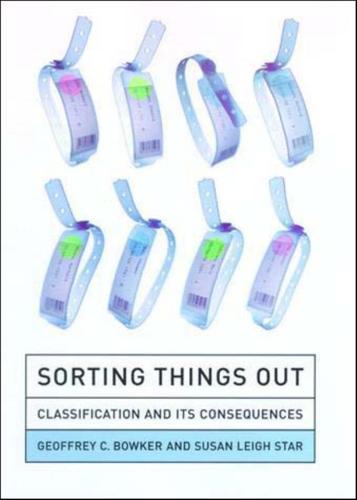
Sorting Things Out: Classification and Its Consequences (Inside Technology)
by
Geoffrey C. Bowker
Published 24 Aug 2000
This tension is itself collective, historical, and partially institutionalized. The medium of an information system is not just wires and plugs , bits and bytes, but also conventions of representation, information both formal and empirical. A system becomes a system in design and use, not the one without the other. The medium is the message, certainly, and it is also the case that both are political creations (Taylor and Van Every 1 993). In Donna Haraway's words, " No layer of the onion of practice that is technos cience is outside the reach of technology of critical interpretation and critical inquiry about positioning and location; that is the condition of embodiment and mortality.
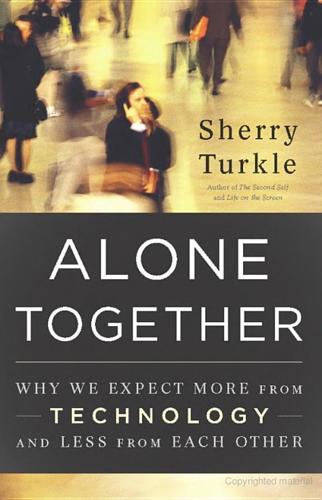
Alone Together
by
Sherry Turkle
Published 11 Jan 2011
For her, the hurt of no response follows from what she calls the “formality” of instant messenging. In her circle, instant messages are sent in the evening, when one is working on homework on a laptop or desktop. This presumed social and technical setting compels a certain gravitas. Mandy’s case rests on an argument in the spirit of Marshall McLuhan. The medium is the message: if you are at your computer, the medium is formal, and so is the message. If you are running around, shopping, or having a coffee, and you swipe a few keys on your phone to send a text, the medium is informal, and so is the message, no matter how much you may have edited the content. The defenders of the “nonchalance” of instant messaging stand their ground: when you send an IM, it is going to a person “who has maybe ten things going on.”
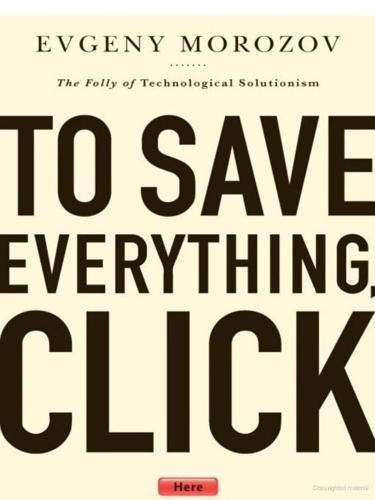
To Save Everything, Click Here: The Folly of Technological Solutionism
by
Evgeny Morozov
Published 15 Nov 2013
The authors’ key insight is that the new electronic systems that mediate access to such forms—from online databases to search engines—are anything but the unproblematic and highly predictable purveyors of information that we often take them to be. These platforms actually transform and modify the information they carry; it’s one of the few cases in which Marshall McLuhan’s famous dictum that the medium is the message is actually worth heeding, at least partially, for it forces us to confront the information infrastructure that gets us the information we want. There is a certain shallow attitude toward such infrastructure—an attitude that French philosopher Bruno Latour calls “double click”—that treats communication and the production of knowledge as relatively uncomplicated and frictionless affairs that could happen without mediators like databases and search engines.

The Moral Animal: Evolutionary Psychology and Everyday Life
by
Robert Wright
Published 1 Jan 1994
By the end of the nineteenth century, there were magazines such as Popular Science—rough equivalents of the Discovery Channel. This parallel between media is often lost in the course of cosmic media theorizing. The emphasis, instead, is placed on the supposedly determinative differences among media. Marshall McLuhan, for example, said that “the medium is the message”—that different media have different intrinsic, culture-shaping properties. Thus the phonetic alphabet was said to be a “hot” medium (though ideographic script, oddly, was “cool”), and TV was said to be “cool” (though movies were “hot”). What did McLuhan mean by “cool” and “hot”? Deciphering McLuhan’s prose is not always a cost-effective way to spend time.
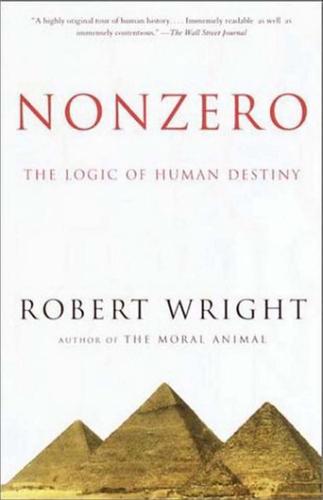
Nonzero: The Logic of Human Destiny
by
Robert Wright
Published 28 Dec 2010
By the end of the nineteenth century, there were magazines such as Popular Science—rough equivalents of the Discovery Channel. This parallel between media is often lost in the course of cosmic media theorizing. The emphasis, instead, is placed on the supposedly determinative differences among media. Marshall McLuhan, for example, said that “the medium is the message”—that different media have different intrinsic, culture-shaping properties. Thus the phonetic alphabet was said to be a “hot” medium (though ideographic script, oddly, was “cool”), and TV was said to be “cool” (though movies were “hot”). What did McLuhan mean by “cool” and “hot”? Deciphering McLuhan’s prose is not always a cost-effective way to spend time.
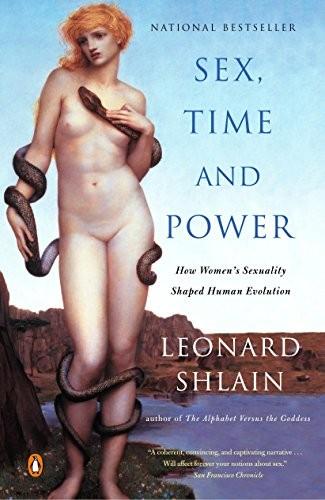
Sex, Time, and Power: How Women's Sexuality Shaped Human Evolution
by
Leonard Shlain
Published 2 Aug 2004
The Old Testament, New Testament, and the Koran became for their respective believers the final arbiters for sacred truth. In the beginning was the Word. Denying the pre-eminence of the images of Lascaux, Luxor, and Nineveh, the word superseded the image. I had based the hypothesis of AVG on the media theorist Marshall McLuhan’s aphorism, “The medium is the message.” The process people use to absorb and generate information is a more important factor shaping culture than the content of the information that they are absorbing or generating. Though AVG obviously struck a chord with many readers, judging by its popularity and many favorable reviews, there were those who criticized it, protesting that men’s malevolent attitudes toward women were more deeply rooted.
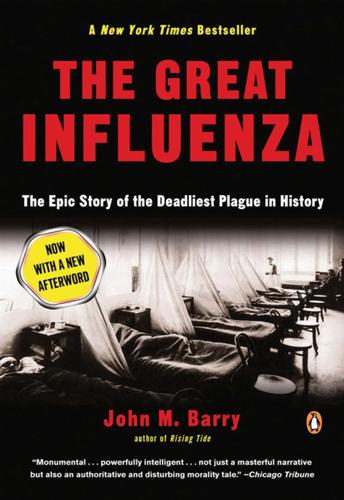
The Great Influenza: The Story of the Deadliest Pandemic in History
by
John M. Barry
Published 9 Feb 2004
Basically everything in the body—whether it belongs there or not—either carries a form on its surface, a marking, a piece that identifies it as a unique entity, or its entire form and being comprises that message. (In this last case, it is pure information, pure message, and it embodies perfectly Marshall McLuhan’s observation that “the medium is the message.”) Reading the message, like reading braille, is an intimate act, an act of contact and sensitivity. Everything in the body communicates in this way, sending and receiving messages by contact. This communication occurs in much the same way that a round peg fits into a round hole. When they fit together, when they match each other in size, the peg “binds” to the hole.
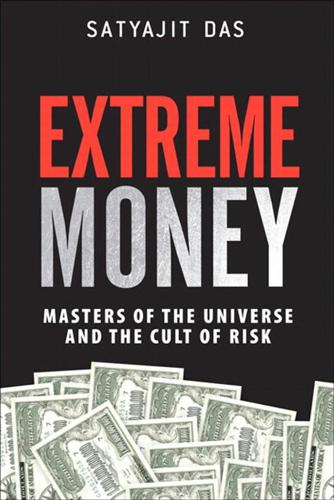
Extreme Money: Masters of the Universe and the Cult of Risk
by
Satyajit Das
Published 14 Oct 2011
When asked what happened to his fortune, the soccer star George Best responded: “I spent 90 percent of my money on women, drink and fast cars. The rest I wasted!” Slowly, the world awoke to the realization that it had wasted a staggering amount of wealth that did not exist in the first place. 6. Money Honey The scholar Marshall McLuhan elliptically noted that “the medium is the message.” The medium is newspapers, books, television, and increasingly the Internet. The message now was money. Banker Walter Wriston anticipated it: “Information about money has become almost as important as money itself.”1 Once, newspapers gave more space to sport than financial news. When asked about the reason, Richard Harwood, the assistant managing editor of the Washington Post, replied: “I guess it is because we think sport is more interesting to readers than business and economics.

Carrying the Fire: An Astronaut's Journeys: 50th Anniversary Edition
by
Michael Collins
and
Charles A. Lindbergh
Published 15 Apr 2019
Tsiolkovsky, Goddard, Von Braun—these chaps never dreamed about simulators or recovery systems or mission planning, but about the raw rocket power which would be required to put men into orbit, onto the moon, out beyond Jupiter, or wherever. In my own view, the pendulum has swung; rockets are about as interesting as the powder which propels a bullet. To be fascinated by them is to prove McLuhan’s point that the medium is the message, or perhaps it is a more Freudian thing. From the crew point of view, one rides the thing rather than flying it, and the trick is to know when to get off, or when to shut it down, if it turns out to be ailing. The boundaries of leaving or staying are generally defined by two sets of limits: if it wanders off past a certain angle, which might cause you to point in the wrong direction, or if it changes direction at an unacceptable rate, indicating a predilection to tumble ass over tea kettle.
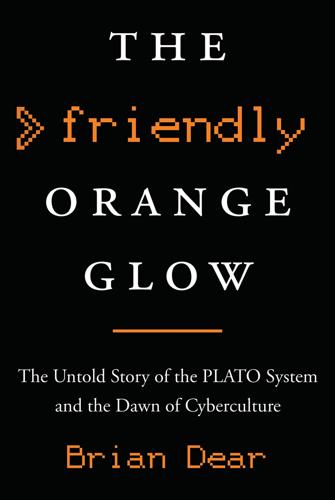
The Friendly Orange Glow: The Untold Story of the PLATO System and the Dawn of Cyberculture
by
Brian Dear
Published 14 Jun 2017
Kay and his colleague Adele Goldberg would summarize their distaste for “time-sharing” (the very word was anathema to them) in a famous essay entitled “Personal Dynamic Media,” published in 1977: Children really needed as much or more computing power than adults were willing to settle for when using a timesharing system. The best that timesharing has to offer is slow control of crude wire-frame green-tinted graphics and square-wave musical tones. The kids, on the other hand, are used to finger-paints, water colors, color television, real musical instruments, and records. If the “medium is the message,” then the message of low-bandwidth timesharing is “blah.” PLATO meant time-sharing, and Kay was religious in his dislike of it. But the prototype of PLATO’s plasma display, with its tiny, flicker-free pixels from which emanated the Orange Glow, was something else entirely. When Kay laid eyes on that prototype he was astounded.
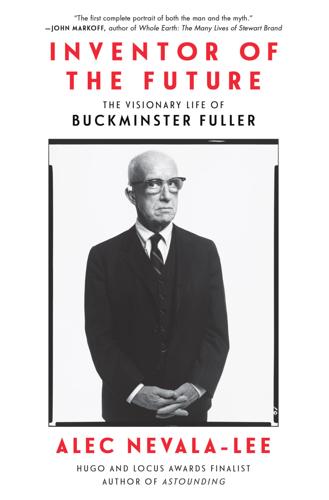
Inventor of the Future: The Visionary Life of Buckminster Fuller
by
Alec Nevala-Lee
Published 1 Aug 2022
“McLuhan has never made any bones about his indebtedness to me as the original source of most of his ideas,” Fuller said privately. “The ‘global village’ indeed was my concept. I don’t think he has an original idea. Not one. McLuhan says so himself.” He dismissed the philosopher’s most famous aphorism, “the medium is the message,” as “the message only of yesterday’s middle-class elite,” and he insisted that McLuhan had always conceded, “Bucky is my master. I am only his disciple.” In September John McHale and his team of students finished the first of six resource reports, concluding that a modest increase in mechanical efficiency—from 4 percent to 12 percent—could turn all of the world’s “have-nots” into “haves,” which Fuller defined as nations with one hundred or more energy slaves per family.

The Empathic Civilization: The Race to Global Consciousness in a World in Crisis
by
Jeremy Rifkin
Published 31 Dec 2009
Both forms of communication allow human beings to tell their story, but the narratives they tell have the unmistakable mark of the communication media being used. That’s because modes of communication help create the very consciousness that they also manage. As the late Canadian philosopher Marshall McLuhan observed, “The medium is the message.” Oral consciousness relies on hearing, while script consciousness relies on sight. This difference alone accounts for the profound change in human consciousness that distinguishes a written culture from an oral one. Hearing is the most internalizing of the senses. While touch, smell, and taste also penetrate the interior of one’s being, hearing is a more powerful experience as anyone who has ever enjoyed music knows so well.

How to Survive a Pandemic
by
Michael Greger, M.D., FACLM
[accessed 2020 Mar 30]. https://doi.org/10.1016/j.jaut.2020.102434. 2657. Carbone M, Green JB, Bucci EM, Lednicky JA. 2020. Coronaviruses: facts, myths, and hypotheses. J Thorac Oncol. Article in press. [accessed 2020 Mar 30]. https://doi.org/10.1016/j.jtho.2020.02.024. 2658. Garrett L. 2020. COVID-19: the medium is the message. Lancet. 395(10228):942–943. [accessed 2020 Mar 30]. https://doi.org/10.1016/S0140-6736(20)30600-0. 2659. Jones DS. 2020 Mar 12. History in a crisis—lessons for Covid-19. N Engl J Med. [accessed 2020 Mar 30]. https://doi.org/10.1056/NEJMp2004361. 2660. The Lancet. 2020. COVID-19: fighting panic with information.
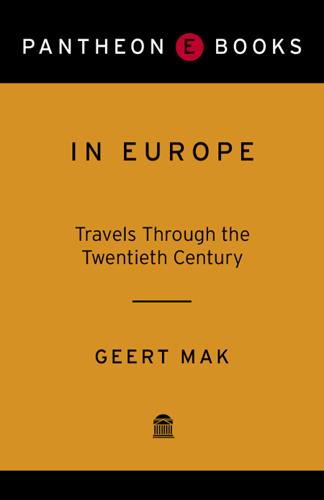
In Europe
by
Geert Mak
Published 15 Sep 2004
The second impetus behind this ‘perfect storm’ was the exceptionally international, even intercontinental, nature of the revolt. In every student town from Barcelona to Berlin, one saw the same books in shop windows: Herbert Marcuse (the individual is merely a means of production, divorced from all joy and pleasure), Marshall McLuhan (‘the medium is the message’ and the omnipotence of the modern media) and the new proclamation as gospel of the works of Karl Marx. The London fashion – boots, brightly coloured stockings, jeans and miniskirts – designed by the youthful Mary Quant in her boutique in Chelsea, was to determine the look of young people all over Europe and North America.

Nixonland: The Rise of a President and the Fracturing of America
by
Rick Perlstein
Published 1 Jan 2008
The logic of the times demanded it. This new political science had a prophet, and his name was Marshall McLuhan—“the new spokesman of the electronic age,” as the blurb to his 1964 magnum opus, Understanding Media: The Extensions of Man, called him. A key hinge of that book’s argument that “the medium is the message” was his exegesis of the Kennedy-Nixon debates. He thought Nixon resembled the railway lawyer in westerns “who signs leases that are not in the best interests of the folks in the little town…. Without TV, Nixon had it made.” The influence of TV had only accelerated in the eight years since.